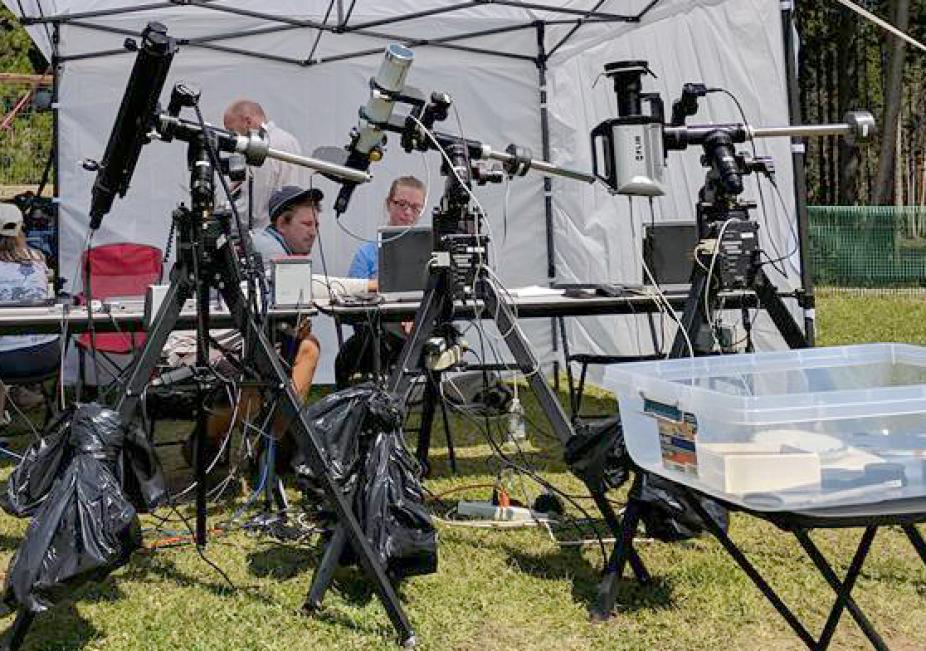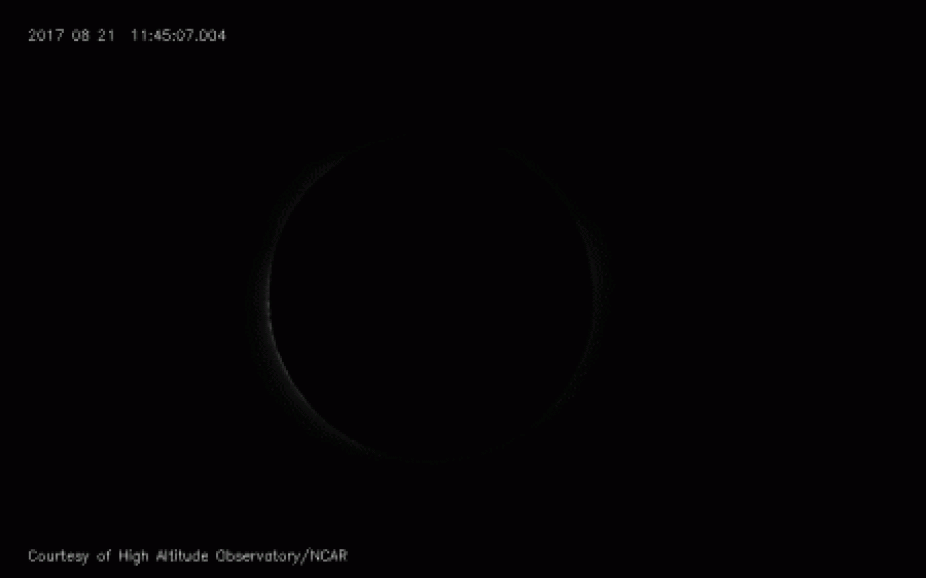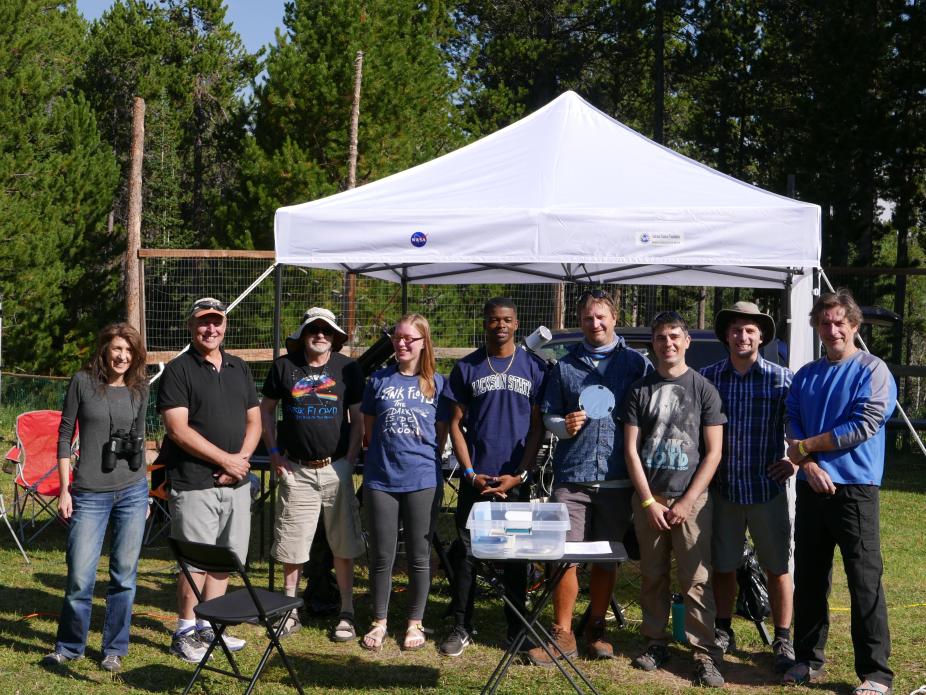HAO scientists observed the August 21st total eclipse with a suite of three instruments with financial assistance provided by NASA. The experiments were intended to learn about the magnetic and thermal structure of the solar corona with the goal of understanding how the Sun generates weather in space.

(Right to left) FLIR camera, PolarCam, and Avantes flash spectra.
In addition, new technology to measure coronal polarization was demonstrated. First, a FLIR thermal imager was used to obtain narrow-bandpass images at infrared wavelengths of magnetically sensitive coronal emission lines to identify optimal lines for coronal magnetometry. The second novel experiment, called PolarCam, obtained instantaneous measurements of the polarization of three selected coronal lines from visible to near infrared wavelengths, at high frame rates. An innovative commercial sensor coated with arrays of special linear micro-polarizers oriented at four different angles was used to produce polarization measurements that provided information on the orientation of magnetic fields in the solar corona. The third experiment, "flash experiment," obtained rapid spectra of the solar chromosphere as the moon covered and uncovered this layer at the start and end of the eclipse.

Movie of "Baily's beads" captured by HAO PolCam at the end of the scientific observing program. As the total eclipse ends, the first appearance of the Sun is the light that shines through valleys and craters of the Moon forming "white pearls" on the lunar limb (the edge of the Moon, as seen from a distance) that are visible for only a few seconds. Their name is in honor of Francis Baily, an English astronomer, who first provided an explanation of this phenomenon in 1836.
(click image to run animation)
On August 21, 2017, HAO members and collaborators formed an observation team at the first total solar eclipse in the continental US since 1979. (Casper Mountain, Wyoming).

HAO members and collaborators at Casper Mountain, Wyoming. (Left to right) Giuliana de Toma, Steven Tomczyk, Philip Judge, Alyssa Boll, Keon Gibson, Ben Berkey, Paul Bryans, Scott Sewell, and Jim Hannigan.